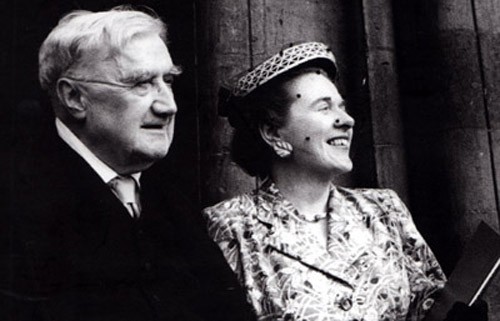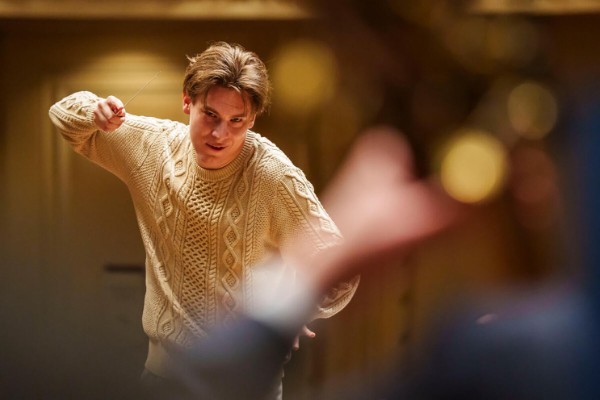John Singer Sargent is famous for his psychologically probing portraits of wealthy and socially prominent people from the turn of the century.
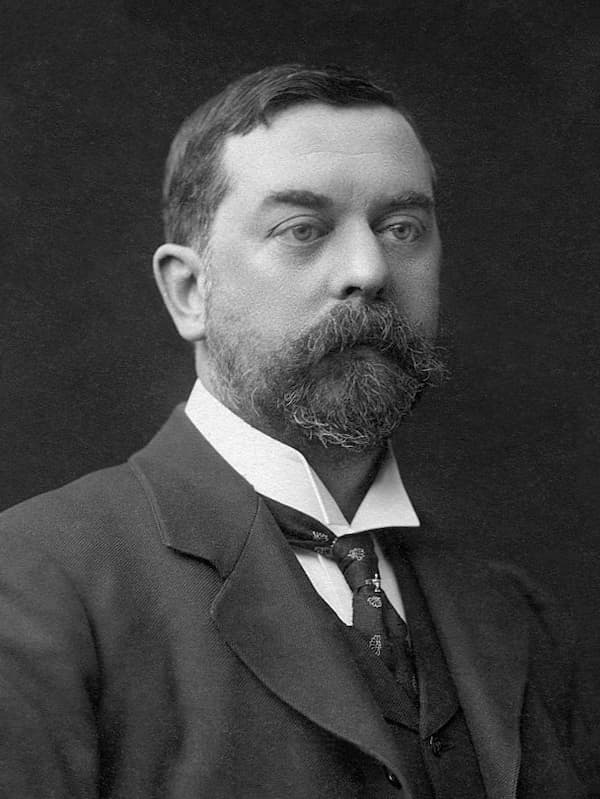
John Singer Sargent, 1903
However, Sargent was also fascinated with music, and he painted many portraits of some of the most talented musicians of his era.
Today, we’re looking at eight portraits of musicians by John Singer Sargent and the stories behind the subjects.
Louis de Fourcaud (1884)
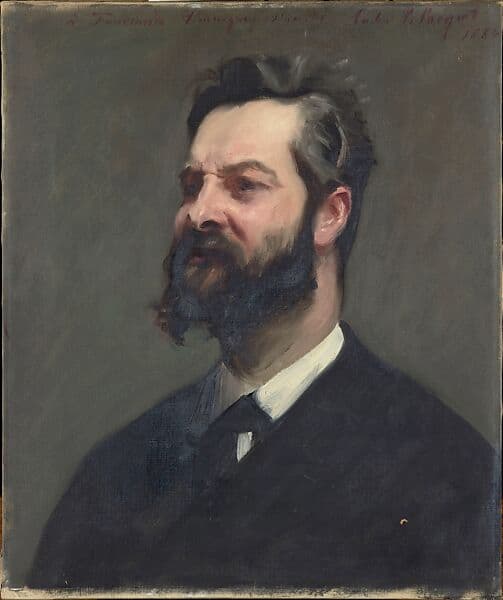
John Singer Sargent: Portrait of Louis de Fourcaud
Journalist and writer Louis de Fourcaud (1851-1914) started out as a cello student at the Paris Conservatoire.
Despite his musical beginnings, he would ultimately make his name as an art critic. When Sargent was just starting out, Fourcaud gave him positive reviews.
Like Sargent, Fourcaud was obsessed with the music of Richard Wagner, even traveling to Bayreuth in 1879 to meet the composer.
But despite his Wagnerian obsession, he also sought to promote the instrumental music of French composers.
In 1884, he commissioned Tchaikovsky to write his Impromptu-Caprice, as part of an album of short piano works that Fourcaud was assembling to benefit poor composers.
Tchaikovsky’s Impromptu-Caprice
Gabriel Fauré (1889)
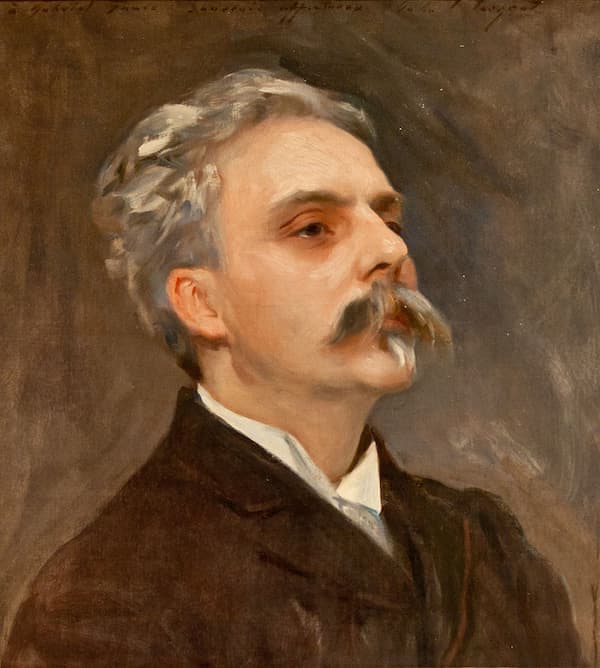
John Singer Sargent: Portrait of Gabriel Fauré
Composer Gabriel Fauré (1845-1924) was one of the great French composers of his generation, famous today for his piano works and otherworldly Requiem.
Fauré’s Requiem
Sargent met Fauré in Paris. In 1884, after the scandal surrounding the exhibition of his portrait Madame X, Sargent relocated to London.
But Sargent brought his affection for Fauré’s distinctly Parisian music with him, sometimes going so far as to have it played at concerts in his new studio.
He would come to view Fauré as one of his favorite composers, alongside Wagner.
Learn more about the Fauré/Sargent friendship.
George Henschel (1889)
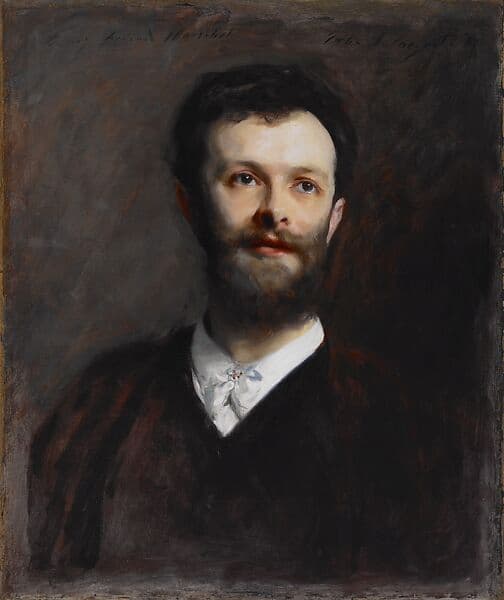
John Singer Sargent: Portrait of George Henschel
George Henschel (1850-1934) was born in Breslau (now Wrocław, Poland) and made his first public appearance as a pianist there when he was twelve.
He also became a baritone, conductor, and even composer.
He befriended Johannes Brahms when he sang in a Handel performance at the Lower Rhenish Music Festival in 1874, and their friendship lasted until Brahms’s death two decades later.
In 1881, he was named the first conductor of the Boston Symphony Orchestra. That same year, he married soprano Lillian Bailey.
When she and Henshel moved to London, they became friends with Sargent. Sargent painted the portrait over the course of five sittings, which, technically, were “standings”, because the musical Sargent had his subject stand and sing while he painted him.
When Lillian saw the finished portrait, she was delighted, saying, “How beautiful! It’s George having arrived in heaven.”
George Henschel singing and accompanying himself to works by Schubert and Schumann, 1928 and 1913
Léon Delafosse (1895)
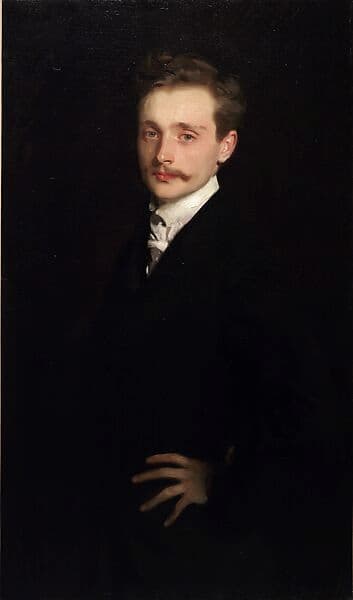
John Singer Sargent: Portrait of Léon Delafosse
Léon Delafosse (1874-1951) was a French composer and pianist.
He was a piano prodigy born to a poor family. He entered the Paris Conservatoire when he was seven and won a first prize when he was just thirteen.
Despite his talent, Delafosse’s social currency waxed and waned. As a young man, he became a protege of Robert de Montesquiou, nearly twenty years his senior. He also met and inspired Marcel Proust.
However, he ultimately fell out with both men, possibly due to a failed romantic relationship between Montesquiou and Delafosse.
Musically, Delafosse specialised in the music of Chopin and Fauré, which made him dear to Sargent. Sargent actually painted this portrait as a gift for him.
Léon Delafosse’s Prelude in C Minor
Mabel Batten (1897)
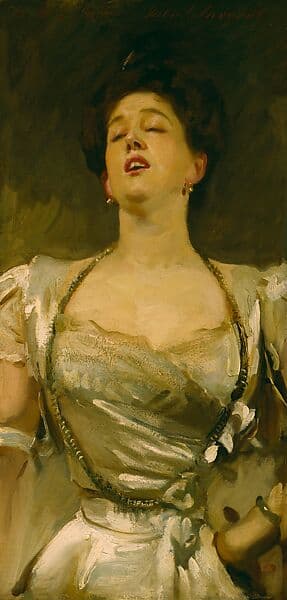
John Singer Sargent: Portrait of Mabel Batten
Mabel Batten (1856–1916) studied music in Dresden, Germany, and Bruges, Belgium.
She was primarily a singer, but also played the piano and guitar.
She married George Batten, secretary to the Viceroy of India, in 1874.
However, the most important romantic relationship of her life was arguably with lesbian author Radclyffe Hall, whom Batten met in 1907, and who was half Batten’s age. The two lived together after Batten was widowed, and are buried together.
Sargent painted Batten’s portrait in 1897. By that time, she was a prominent patron of the arts who often sang at private soirees. Sargent heard her at one of these gatherings and was delighted. When he painted her portrait, he chose to portray her mid-song.
Dame Ethel Mary Smyth (1901)
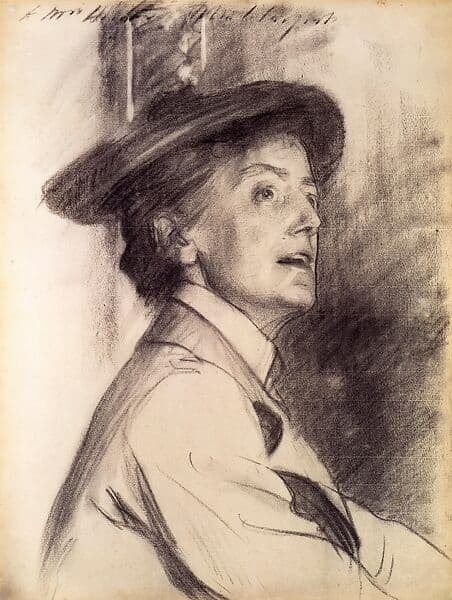
John Singer Sargent: Portrait of Dame Ethel Mary Smyth
Ethel Smyth (1858-1944) was a British composer. She left England to study in Germany, where she joined the social circle of Johannes Brahms and Clara Schumann, and met figures like Grieg and Tchaikovsky.
She wrote a number of major works, including a Concerto for Violin, Horn and Orchestra; a Mass in D; and an opera called The Wreckers.
In addition to being a prominent woman composer of the late nineteenth century, Smyth was an outspoken queer woman who fought for women’s rights, and suffrage specifically.
She was once jailed for two months for her protests. Conductor Sir Thomas Beecham went to visit her, only to discover her conducting women prisoners in the prison quadrangle in a rendition of her pro-suffrage March of the Women.
Smyth’s irrepressible energy and idealism are showcased in this sketch by Sargent, as she looks up out of the picture’s frame, clearly seeing something that remains out of sight for the viewer.
Overture to The Wreckers
Gretchen Osgood Warren (1903)
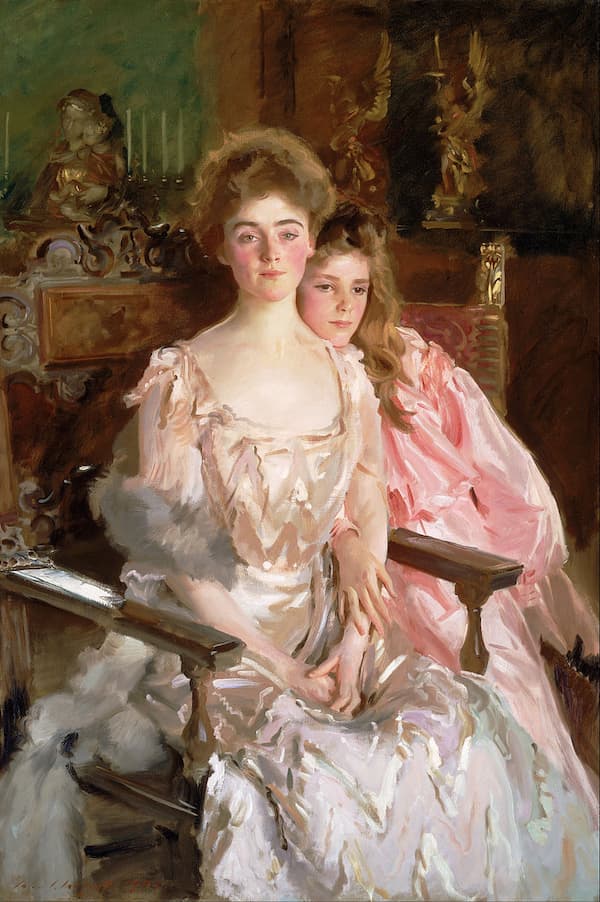
John Singer Sargent: Portrait of Gretchen Osgood Warren
Margaret Gretchen Osgood (1871-1961) was born to a wealthy and well-educated Boston family. She spent much of her childhood in Germany and France, where her doctor father worked and studied.
While in Paris, she studied singing with Fauré. However, like most wealthy young women, she never sang professionally, opting to appear solely at private gatherings instead.
In 1891, she married fellow wealthy Bostonian Fiske Warren. They had a daughter, Rachel, the following year.
In 1903, Sargent came to Boston and painted some portraits, including this one of Gretchen and Rachel.
Leonora Speyer (1907)
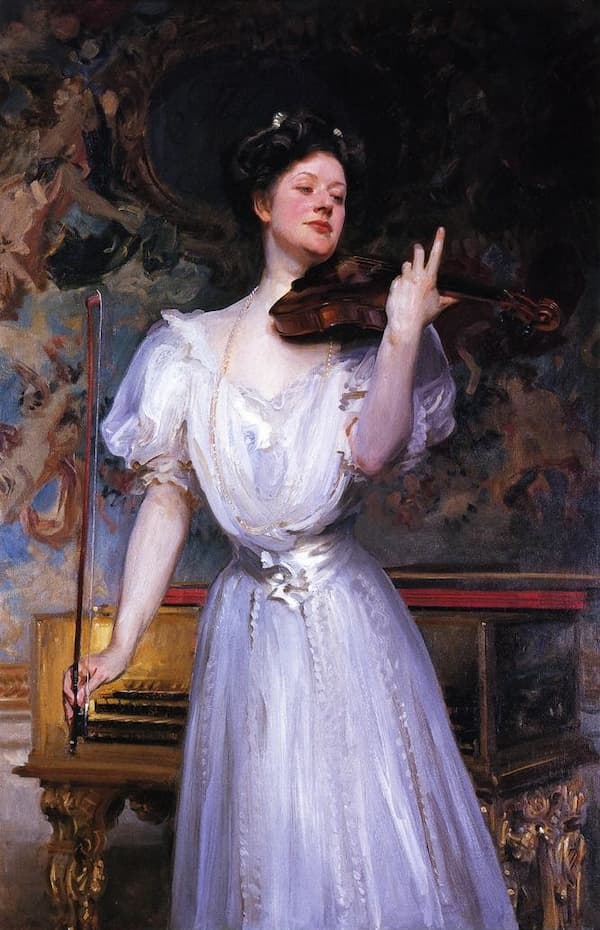
John Singer Sargent: Portrait of Leonora Speyer
Leonora von Stosch (1872-1956) was born in Washington, D.C., and made a name for herself as a child prodigy violinist, pianist, and composer. She studied in Paris and Leipzig, and as an adult became best known for her violin playing.
She married in 1894 and had a daughter, but divorced in 1902. That same year, she married German banker Edgar Speyer. She would have three more daughters with him.
After her second marriage, she retired from the stage, turning her focus to running a prestigious London salon and supporting composers and performers.
This portrait by Sargent was hung in the music room of the Speyer mansion on Grosvenor Street. Over the years, that music room hosted Richard Strauss, Percy Grainger, Edward Elgar, Claude Debussy, Gabriel Fauré, Edvard Grieg, and many others.
A clip from a recording Leonora Speyer made of Brahms’s Hungarian Dance No. 5 in 1909
For more of the best in classical music, sign up for our E-Newsletter

